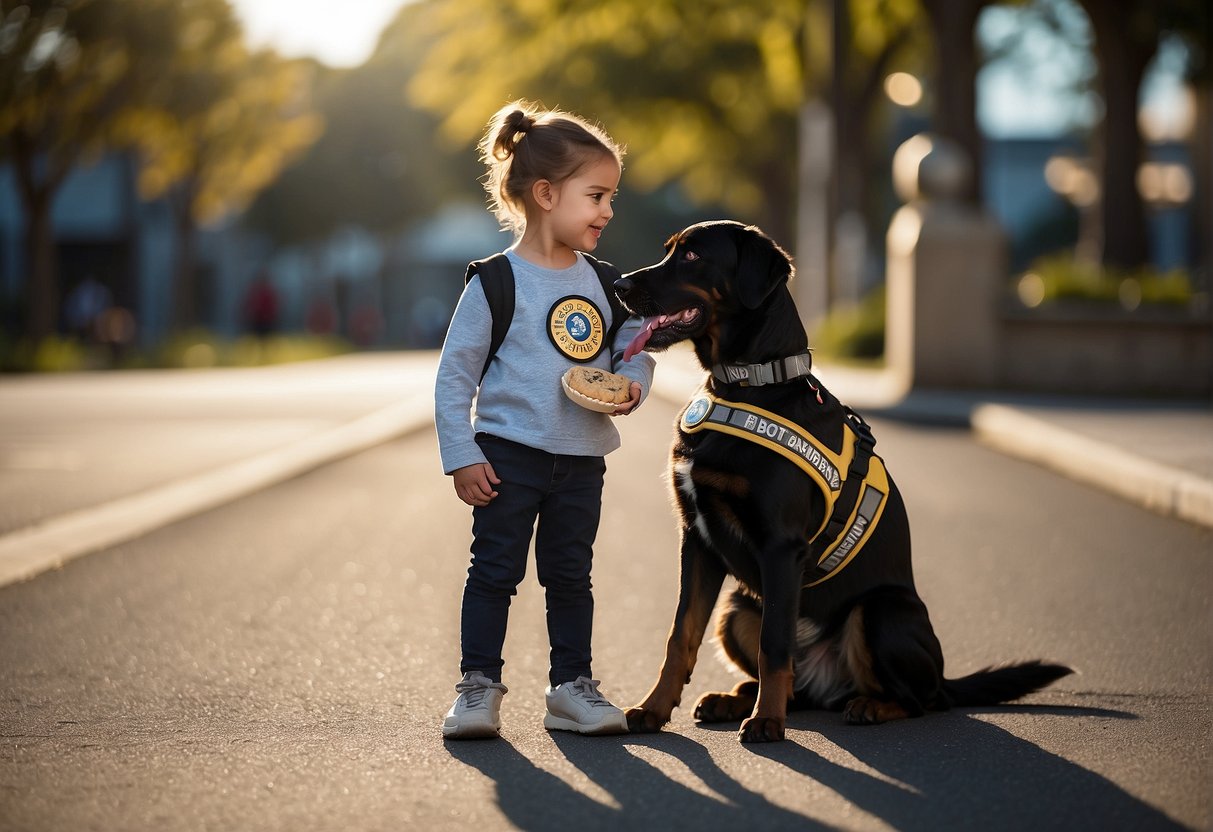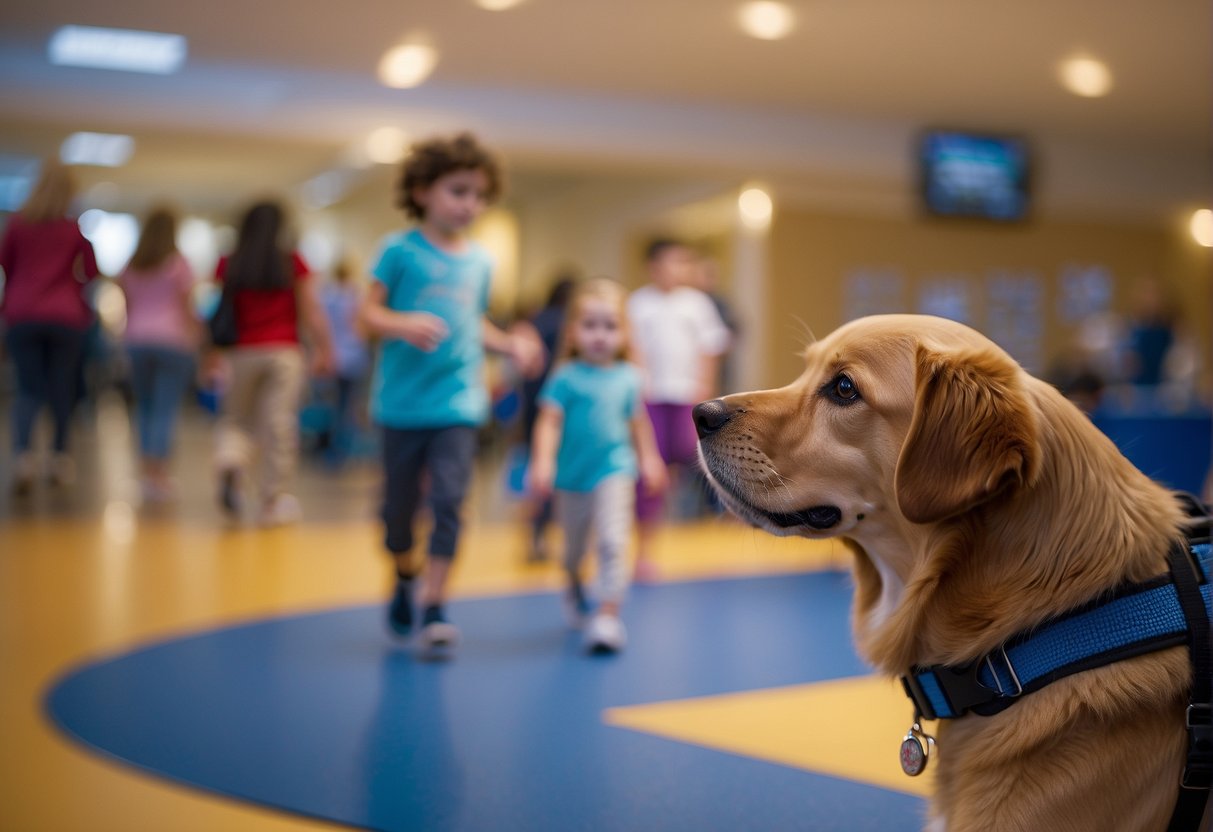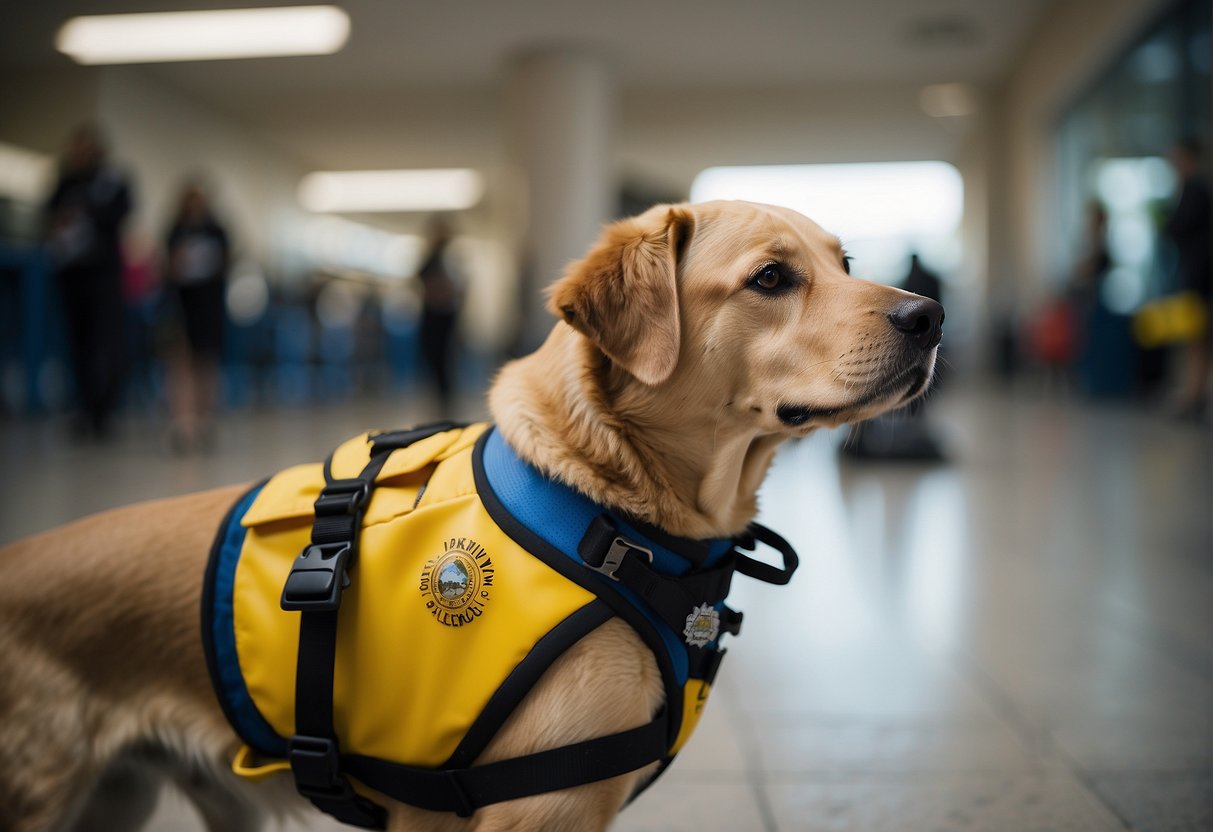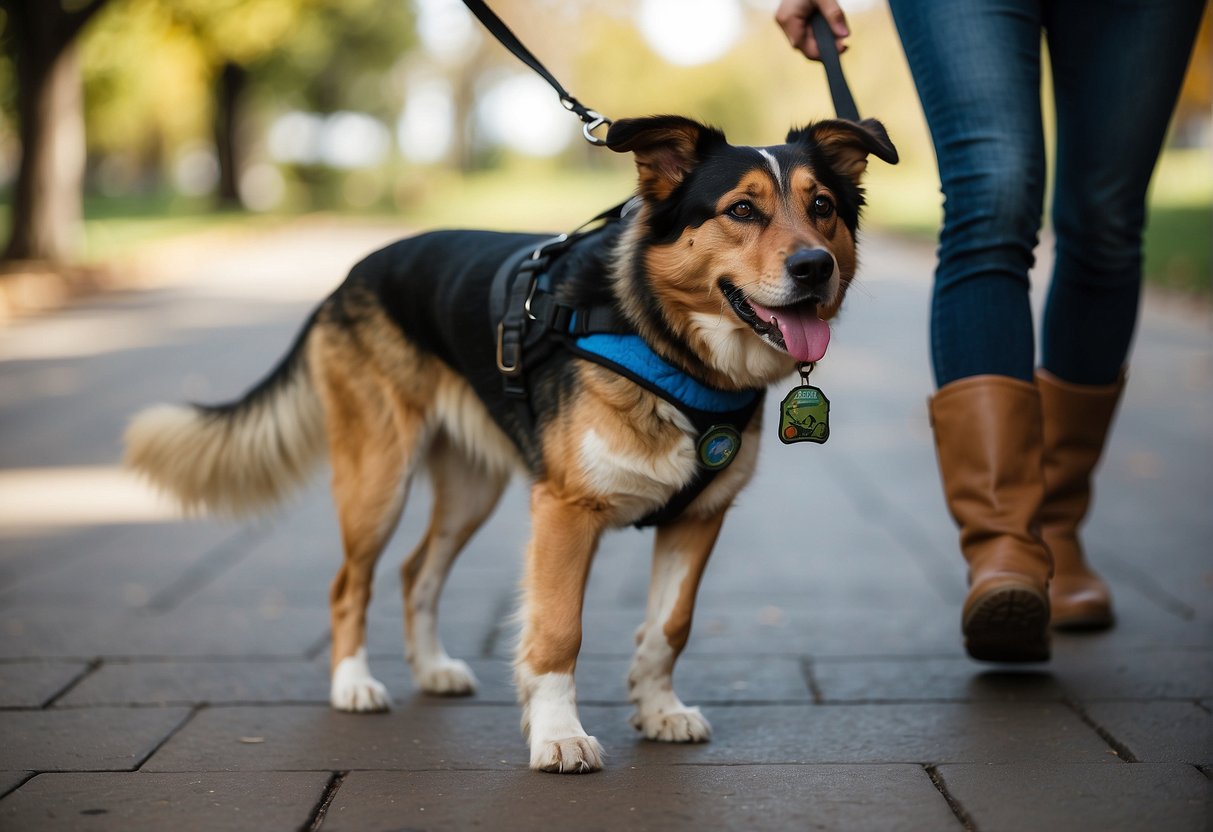Autism service dogs are a type of service dog that are trained to assist individuals with autism spectrum disorder (ASD). These dogs are trained to provide support and assistance to individuals with ASD, helping to improve their quality of life and independence. Training an autism service dog is a complex process that requires significant time, effort, and dedication from both the trainer and the dog.

Understanding Autism Service Dogs
Autism service dogs are trained to provide a range of services and support to individuals with ASD. These dogs can be trained to provide sensory support, such as deep pressure therapy or tactile stimulation, to help individuals with ASD manage sensory overload. They can also be trained to provide behavioral support, such as interrupting self-harming behaviors or providing a calming presence during times of anxiety or stress. Additionally, autism service dogs can be trained to assist with daily living tasks, such as retrieving items or opening doors.
Training Process and Considerations
Training an autism service dog is a lengthy and complex process that requires significant time, effort, and dedication from both the trainer and the dog. The training process typically involves several stages, including basic obedience training, specialized training for tasks specific to autism support, and public access training. It is important to work with a reputable organization or trainer who has experience in training autism service dogs to ensure that the dog is properly trained and meets the individual needs of the person with ASD. Additionally, it is important to consider the cost and ongoing care requirements of an autism service dog before deciding to pursue training.
Key Takeaways
- Autism service dogs are trained to provide support and assistance to individuals with autism spectrum disorder, helping to improve their quality of life and independence.
- Training an autism service dog is a complex process that requires significant time, effort, and dedication from both the trainer and the dog.
- It is important to work with a reputable organization or trainer who has experience in training autism service dogs and to consider the cost and ongoing care requirements before deciding to pursue training.
Understanding Autism Service Dogs

Autism service dogs are specially trained dogs that assist individuals with autism spectrum disorder (ASD) in their daily lives. These dogs are trained to perform specific tasks that can help their handlers with various aspects of their condition.
Roles and Responsibilities
The primary role of an autism service dog is to provide assistance to their handler in a variety of ways. These dogs can help with behavior and social interaction, communication, companionship, and tasks such as retrieving items or opening doors. They can also provide comfort during times of stress, anxiety, or meltdown.
Some autism service dogs are trained in deep pressure therapy, which involves applying pressure to the handler’s body to provide a calming effect. Tethering is another technique used by some handlers to help prevent wandering and promote independence.
Selection and Characteristics
The selection process for autism service dogs is rigorous, and only certain breeds are suitable for this type of work. Golden Retrievers are a popular breed for autism service dogs due to their loyalty, trainability, and emotional intelligence.
Autism service dogs must be highly trained and have a calm and gentle temperament. They must be able to remain focused and attentive in public places, where they are considered service animals under the Americans with Disabilities Act (ADA).
Legal Aspects and Public Access
Under the ADA, individuals with disabilities are allowed to bring their service animals into public places, including businesses and restaurants. Autism service dogs are considered service animals, and their handlers have the right to bring them into these places.
It is important to note that not all dogs are considered service animals, and emotional support animals do not have the same legal rights as service animals. Handlers of autism service dogs must carry documentation proving that their dog is a trained service animal.
In summary, autism service dogs play an important role in assisting individuals with ASD in their daily lives. These dogs are highly trained and have specific characteristics that make them suitable for this type of work. Handlers of autism service dogs have legal rights under the ADA, and their dogs are considered service animals in public places.
Training Process and Considerations

Preparation and Commitment
Training an autism service dog requires a significant amount of preparation and commitment. The first step is to find a reputable organization that specializes in training service dogs for individuals with autism. It is important to research the organization thoroughly and ensure that they have experience with training dogs for individuals with autism.
Before starting the training process, the individual and their family must be committed to the long-term responsibility of caring for a service dog. This includes daily care, training, and providing a safe and suitable living environment for the dog. It is important to consider any allergies or other health conditions that may affect the individual’s ability to care for the dog.
Training Techniques and Commands
The training process for an autism service dog involves teaching the dog specific commands and techniques to assist the individual with their specific needs. These may include tasks such as interrupting repetitive behaviors, providing deep pressure therapy, alerting to seizures, and responding to distress signals.
The training techniques used for autism service dogs are based on positive reinforcement and reward-based training. The dog is trained to respond to specific commands and behaviors with rewards such as treats, toys, or praise. It is important to work with a professional dog trainer who has experience with training service dogs for individuals with autism.
Integration and Socialization
Once the dog has completed its training, it is important to integrate the dog into the individual’s daily life and socialize it with other people and animals. This includes introducing the dog to different environments such as schools, hospitals, and nursing homes.
The dog must also be trained to behave appropriately in public settings and around other people and animals. This includes teaching the dog to remain calm and focused in busy environments and to ignore distractions.
Overall, training an autism service dog requires a significant amount of commitment, patience, and responsibility. However, the positive impact that a well-trained service dog can have on an individual with autism and their family is immeasurable.
Frequently Asked Questions

What tasks can autism service dogs perform?
Autism service dogs can perform a variety of tasks, including but not limited to, alerting to sounds, interrupting self-harm behaviors, providing deep pressure therapy, and tracking a child who has wandered away. These tasks are tailored to the specific needs of the individual with autism and can greatly improve their quality of life.
Which breeds are most suitable for autism service dogs?
There is no one breed that is best suited for autism service dogs. However, breeds that are commonly used include Golden Retrievers, Labrador Retrievers, Standard Poodles, and mixes of these breeds. It is important to note that temperament and personality are more important than breed when selecting a dog for service work.
What is the process for obtaining a free autism service dog?
Obtaining a free autism service dog can be a lengthy process. Individuals must first find an organization that provides autism service dogs and meet their eligibility requirements. Once accepted, the individual may be placed on a waiting list until a suitable dog becomes available. The organization will then provide training for the dog and the individual.
How long is the training period for an autism service dog?
The training period for an autism service dog can vary depending on the organization and the individual needs of the dog and handler. On average, it can take up to two years for a dog to complete their training. However, this can vary based on the specific tasks the dog is trained to perform and the individual needs of the handler.
What are the options for funding an autism service dog?
There are several options for funding an autism service dog, including grants, fundraising, and personal savings. Some organizations may also offer financial assistance or payment plans. It is important to research all available options and choose the one that best fits your financial situation.
Can personal pets be trained to become service dogs for individuals with autism?
It is possible for personal pets to be trained to become service dogs for individuals with autism. However, it is important to note that not all dogs have the temperament or personality to become service dogs. It is recommended to work with a professional trainer or organization to determine if your personal pet is suitable for service work.

